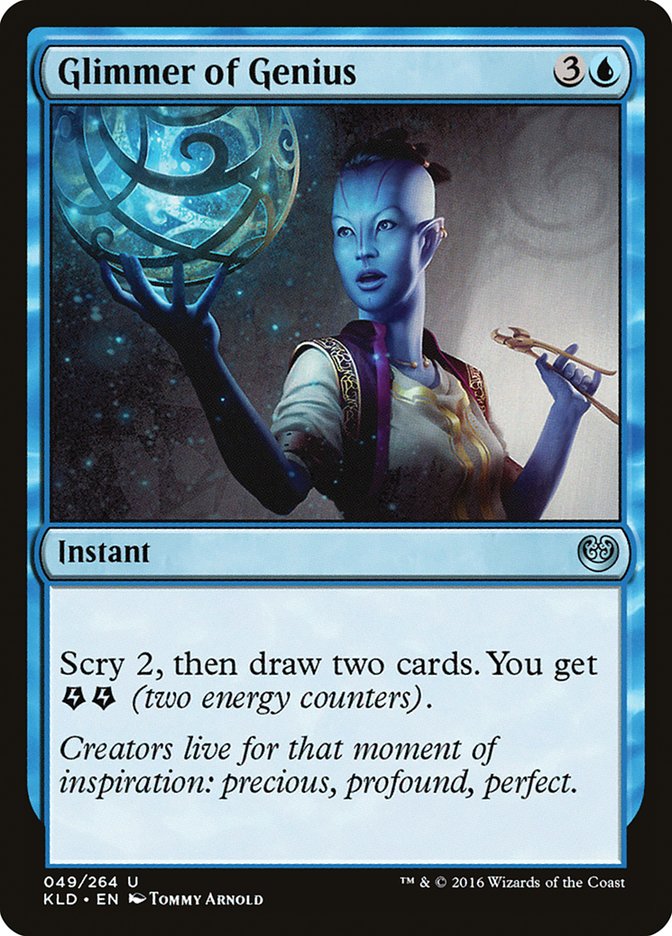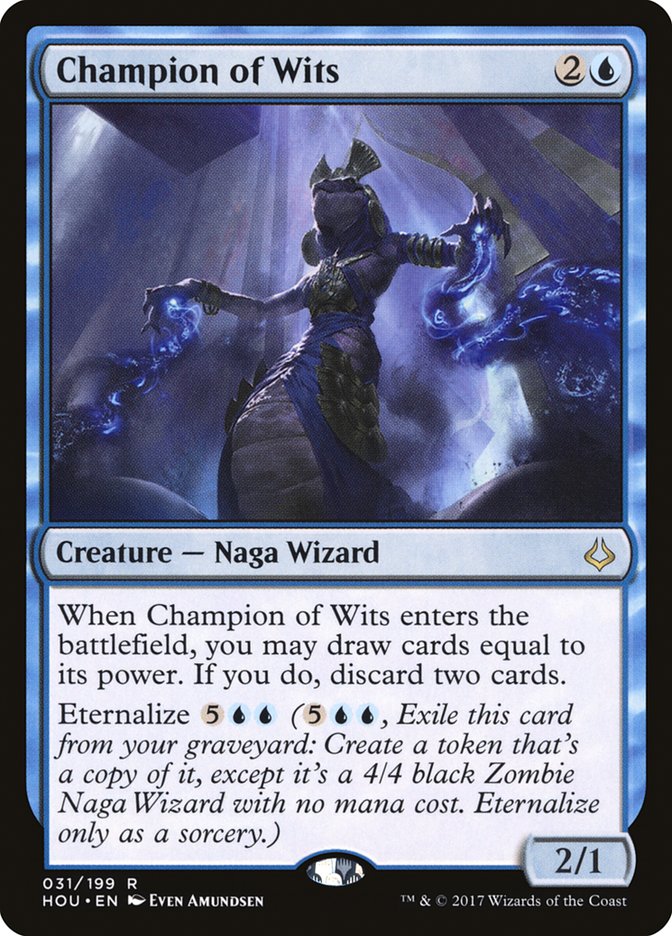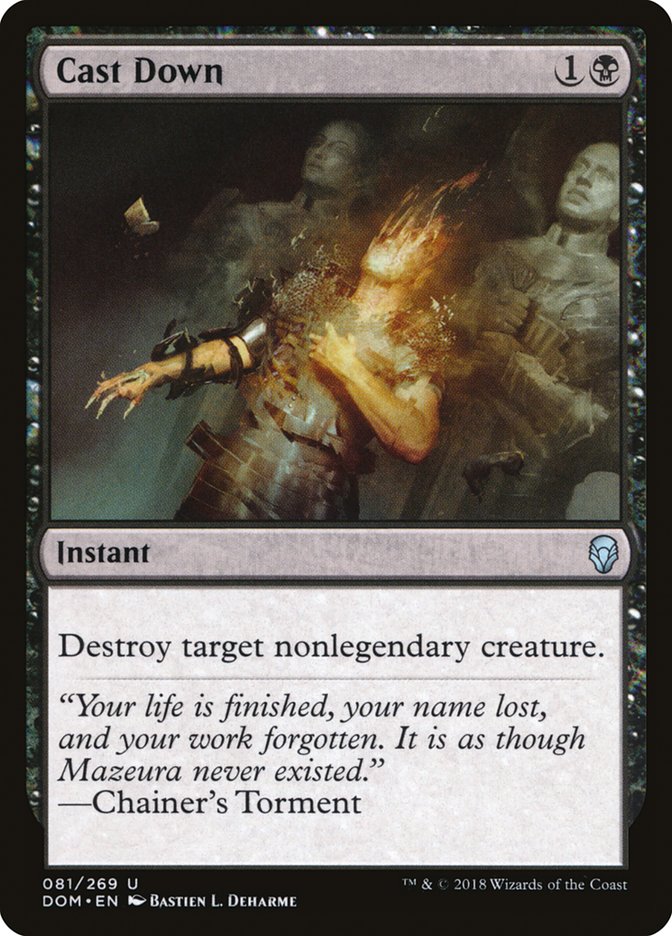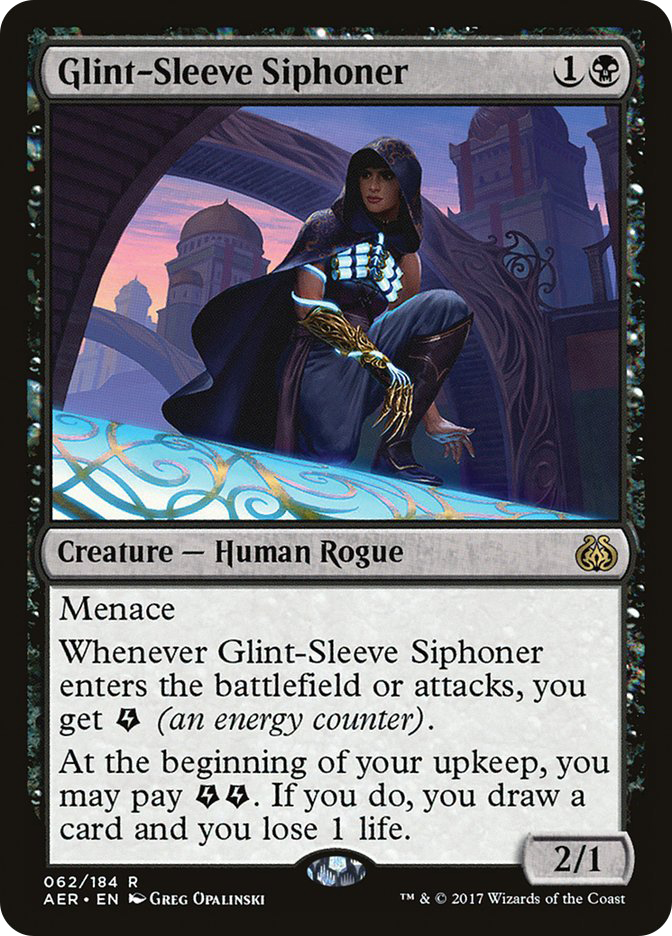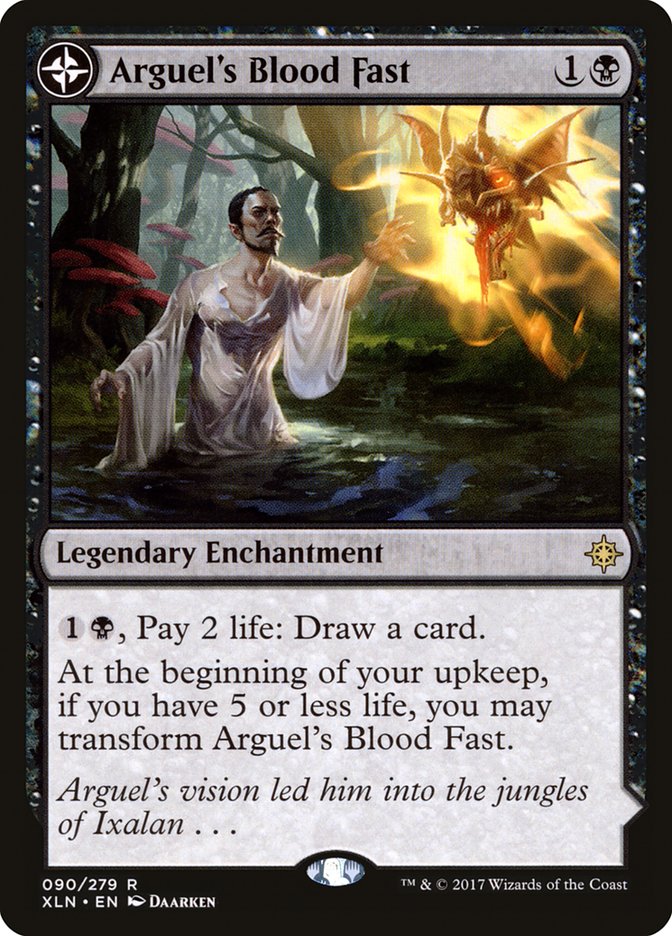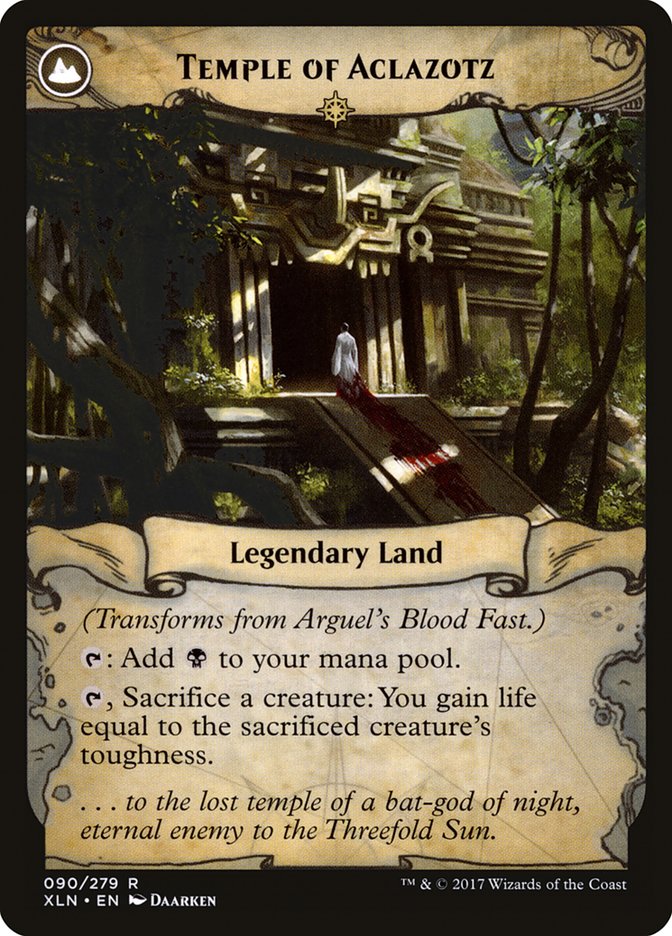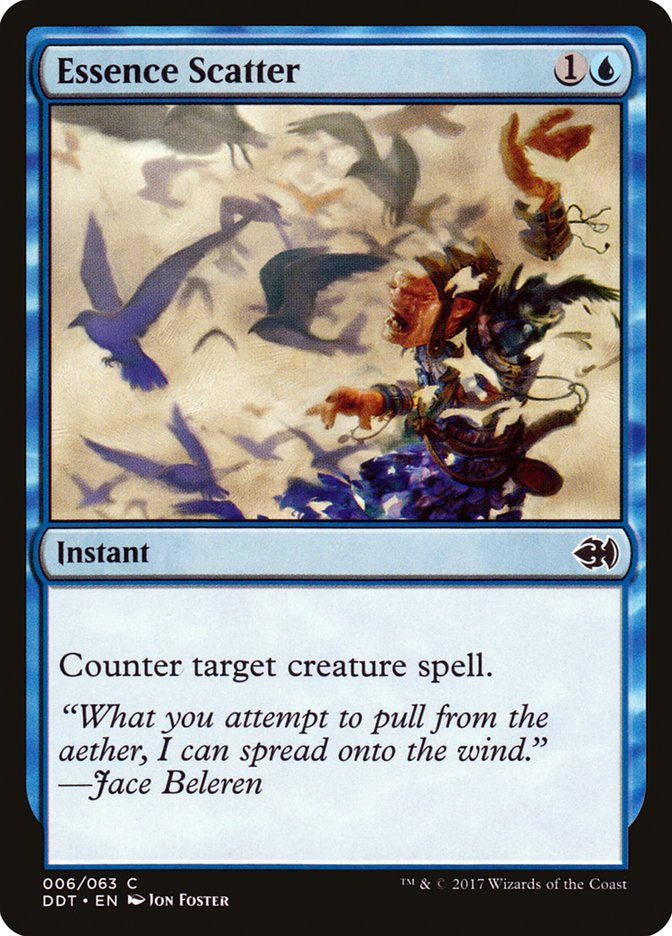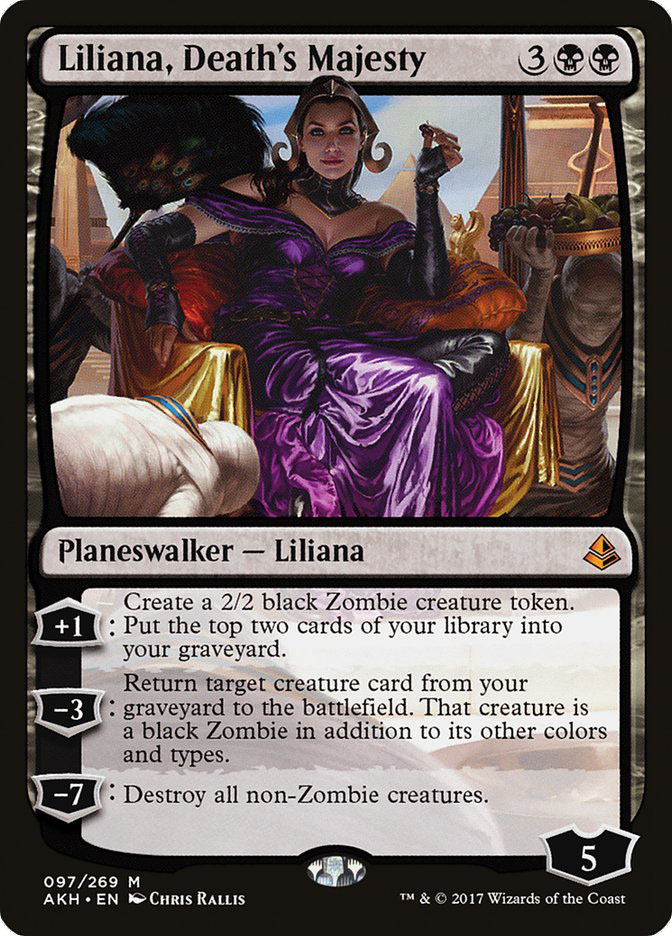If you want to smash control and do reasonably well against red decks, you
should play B/U Midrange.
B/U Midrange is a strategy I’ve liked for
quite some time
, even if I haven’t played it very often. The more important thing to be
aware of is that B/U Midrange is a “smaller” deck, meaning that it’s quite
easy for other decks to go over the top of you if they care to. Trying to
navigate long games while basically only gaining marginal edges from cards
like Champion of Wits and Glint-Sleeve Siphoner can be difficult. If you
don’t do everything right, you could end up getting buried by raw power,
which definitely doesn’t feel good. For that reason, playing B/U Midrange
might not be advisable. There’s a secret to beating their more powerful
cards though.
Velocity
The trick to not falling behind is by generating velocity and making your
land drops, ensuring you’ll be able to play multiple spells in a turn going
forward. Sometimes that means taking some time off from controlling the
battlefield to cast Glimmer of Genius or activate Arguel’s Blood Fast a
couple of times to have a stronger late game.
Note that some players tend to do this the wrong way, prioritizing drawing
cards more than developing their own position. It’s a fine line to walk,
but everything is learnable with practice. In general, you should default
to drawing cards last because keeping up in tempo is more important, but if
you can tell that you’re going to start missing land drops and be unable to
do that in future turns anyway, it might time to fire off that Champion of
Wits or Glimmer of Genius.
You should also be cognizant of when you should be casting a more expensive
spell rather than multiple smaller spells. By playing your larger spell
earlier, that ensures you’ll have more options on subsequent turns, so even
if playing the larger spell doesn’t yield as strong of returns, you will
make that up later.
For example, say you could cast The Scarab God on Turn 5 or Champion of
Wits plus Cast Down, how do you decide which? This deck doesn’t explicitly
need The Scarab God to win, so saving it for the coup de grace doesn’t
actually matter. Assuming you’re not going to die immediately, playing The
Scarab God into Torrential Gearhulk into a turn with three spells will
yield larger returns. Playing your cheaper spells first typically yields
better returns in the short term, but when your hand is The Scarab God, The
Scarab God, and Torrential Gearhulk on Turn 7, you will lament your lack of
options.
The not so obvious secret is to make your land drops, create card
advantage, and be able to play multiple spells on your turn to overwhelm
their stronger cards.
Glint-Sleeve Siphoner Or No?
My answer to this is a resounding yes. An unchecked Glint-Sleeve Siphoner
provides such a huge advantage and puts tremendous pressure on your
opponents to have early interaction.
There’s clearly the issue of Goblin Chainwhirler commanding 40% of the
metagame, but that’s still overblown. Over half the time, your opponents
won’t have Goblin Chainwhirler in their deck. Half of those times, they
won’t draw Goblin Chainwhirler early. You might not have Glint-Sleeve
Siphoner for their Chainwhirlers to munch on either. If you’re on the play,
you can potentially use Essence Scatter, Supreme Will, or Doomfall to deal
with it.
How often is Goblin Chainwhirler going to destroy a Glint-Sleeve Siphoner?
That number is astronomically low. Even if that situation potentially
arises, you can simply hold it to double spell on a later turn.
Todd Anderson made a reasonable point about the Siphoner versus
Chainwhirler debate on coverage last weekend. He noted that Siphoner is
frequently one of the worst cards against red decks anyway, so anytime you
draw it it’s probably going to be bad. How much does it actually matter if
it dies to Chainwhirler anyway?
There are many other decks in the format and Glint-Sleeve Siphoner is
incredible against them. Playing without Siphoner is misguided at best and
potentially disastrous at worst.
Arguel’s Blood Fast Is Uncuttable
This is your best card against aggressive decks, midrange decks, and
control decks — never cut this and never sideboard it out. Even against
extreme aggression, transforming Arguel’s Blood Fast is what will allow you
to stabilize the game completely. Playing with Arguel’s Blood Fast is like
playing on easy mode.
Blood Fast also has the added benefit of protecting your Scarab God from
Vraska’s Contempt.
Essence Scatter Is The Best Doom Blade
With Esper Control (and Torrential Gearhulk, in general) on the rise,
Essence Scatter is where you want to be. It’s the most cost-efficient
answer to Rekindling Phoenix, Hazoret the Fervent, and The Scarab God. Most
people turn to Vraska’s Contempt to answer those cards, but having both is
a huge boon. I started with two copies, easily want the third, and may
sideboard the fourth.
Wait, Isn’t The Scarab God Unplayable?
I know, I know. I did say The Scarab God is
unplayable
, but at that moment in time, it was true! Even currently, I’m playing B/U
because of Vraska’s Contempt and Essence Scatter, not specifically because
of The Scarab God. However, I’m a midrange deck that’s in the market for a
powerful finisher, and The Scarab God certainly fits the bill. It just
doesn’t happen to be game over against anyone like it used to be.
Here’s the issue — If you invest five mana into a 5/5 that doesn’t affect
that battlefield and it gets removed, you might be so far behind that you
lose on the spot. There aren’t any comeback mechanisms in this deck besides
gaining life and playing multiple spells in a turn, so you must be very
careful.
As a finisher or something to jam on an open battlefield, The Scarab God is
fine. However, it’s much weaker than it used to be, and I wouldn’t lean
toward B/U because of it. If I’m already there, it’s a card I should be
playing though.
The Updated Decklist
Creatures (12)
Planeswalkers (1)
Lands (22)
Spells (25)
- 4 Island
- 3 Essence Scatter
- 1 Glimmer of Genius
- 3 Fatal Push
- 1 Never
- 1 Commit
- 2 Supreme Will
- 2 Doomfall
- 4 Vraska's Contempt
- 2 Arguel's Blood Fast
- 2 Cast Down
Sideboard

I dirtied up the removal spells a bit to get more action against control in
Game 1 and Chandra, Torch of Defiance with a copy of Never. Fatal Push
doesn’t have many high priority targets besides Bomat Courier, so shaving a
copy looks fine. It’s the only truly dead card against control.
Maindeck Glimmer of Genius is something I like quite a bit. One of the most
surprising things that’s changed about B/U Midrange from previous Standard
formats is that you have time to cast Glimmer of Genius now! For the most
part, it’s thanks to Cast Down giving you another early, reliable removal
spell.
Liliana, Death’s Majesty can create the biggest tempo swings, but much has
to go right in order for her to be great. Flooding on copies of The Scarab
God is very real, especially because there are often times where if you
play one and it gets removed, you will be so far behind that you’ll lose on
the spot. Having a Liliana over the third Scarab God gives you more
flexibility.
The sideboard is very specific for a red plus Esper metagame. If there are
non-blue cards you need to counter in your metagame (such as Hour of
Promise or Approach of the Second Sun), you’ll want those Jace’s Defeats to
be Negates. Deadeye Tracker is the oddball in the sideboard, since it’s not
spectacular in any specific matchup outside of the God-Pharaoh’s Gift
decks. It does a good job of covering the rest of the format, and I
generally like hedging against the range of decks people could play rather
than just trying to beat the most popular decks. River’s Rebuke was in my
sideboard for a bit for the same reason, but mirror matches aren’t common
enough to warrant it, plus I like my setup for that matchup already.
Sideboarding Guide
VS R/B Midrange
Out:

In:

This matchup is very interesting. Both decks are capable of being built in
wildly different ways, so neither player really knows exactly what to
expect.
One of the biggest reasons R/B typically has an edge is because of
planeswalkers, like Chandra and Karn, while also having Rekindling Phoenix
and Hazoret the Fervent, each of which puts pressure on your Vraska’s
Contempts. Torrential Gearhulk and counterspells can mitigate that to some
degree, but the games will basically come down to the first person to stick
a large threat.
Having more planeswalkers of your own, like Karn and Liliana, would make
this matchup much better, so that’s probably a route I’ll take eventually.
This matchup comes down to four things:
Not getting run over, keeping their battlefield clear, making your land
drops, and sticking a threat while not dying to theirs or getting burned
out.
Their threat diversity makes #2 difficult, but it’s doable. If you play
Karn when facing zero opposition, it’s unlikely they’ll be able to remove
it easily, which means #3 is looking good and #4 will probably happen
because they’ll have to invest significant resources to take it down, which
should give you even more time.
All in all, it’s about proper mana investment. If you’re stuck on lands
with expensive cards in hand, you’re not getting the most out of your mana
each turn. If they play a four-mana threat and you have to use seven mana
to deal with it (like with Supreme Will to find Vraska’s Contempt), they
will snowball their advantage. Karn flips the script on them by costing
four mana immediately and zero later, which puts you closer to even
footing.
VS Mono-Red Aggro
Out:

In:

I’m fine with only one copy of Glimmer of Genius here, but if you’re on the
play and/or they slow down a lot after sideboard, the second copy is
reasonable.
VS Esper Control
Out:

In:

Cards I’m Not Playing

Some of these cards could potentially be great. Ravenous Chupacabra was
something I played with at first, but the distinct lack of green decks made
it mediocre at best. For the most part, Hostage Taker is a worse version of
Chupacabra. A package of Kitesail Freebooter and Chart a Course could be
nice, but that would make the deck even more “small ball” than I want. That
would enable Aethersphere Harvester, which would be a great pickup. Given
that my red matchup is merely close and not amazing, it’s a package I must
try at some point.
Arguel’s Blood Fast is already incredible but could potentially be off the
charts with Gifted Aetherborn. You don’t really need it, plus Gifted
Aetherborn lines up horribly against basically every card in the red decks.
Sailor of Means looks good in theory, but every time you block a Scrapheap
Scrounger, you run the risk of losing it to a Goblin Chainwhirler anyway.
Walking Ballista is a fine card but rather weak at the moment. Some people
have been playing copies of The Eldest Reborn, but it has never looked
impressive. Search for Azcanta is a much worse Arguel’s Blood Fast,
although it’s clearly better to have one of each than two copies of either.
If you wanted a third enchantment, I could see a Search for Azcanta in the
sideboard, but I mostly prefer Glimmer of Genius because it’s difficult to
get cards in your graveyard unless you draw Champion of Wits.
The lands that enter the battlefield tapped aren’t worth it to me. You
don’t need Submerged Boneyard if you don’t have Gifted Aetherborn, and the
Memorials aren’t exactly what you want to be doing when you already have so
many mana sinks. Ifnir Deadlands is fine, but if I’m flooding out and
that’s the best thing I can use my mana on, I think I’m going to be losing
either way. There are also the Drowned Catacombs and Arguel’s Blood Fasts
to consider.
***
Going forward, I’m going to continue playing B/U Midrange. My only regret
is that it was one of the few decks I didn’t test for the Pro Tour.


